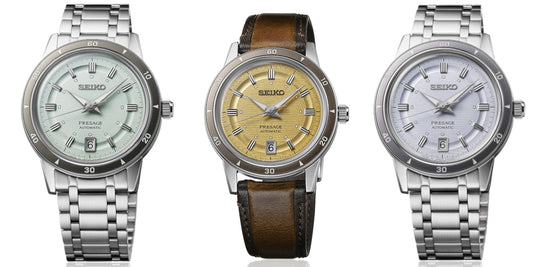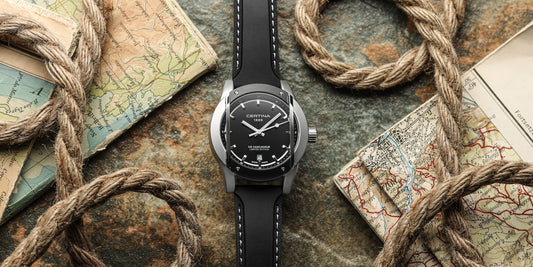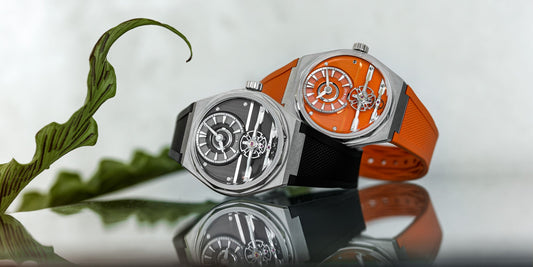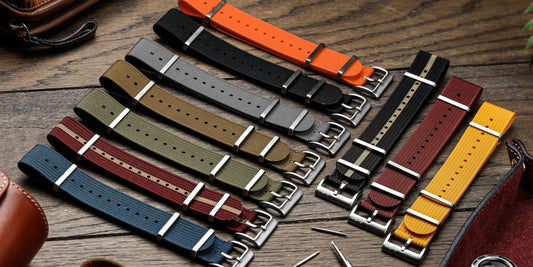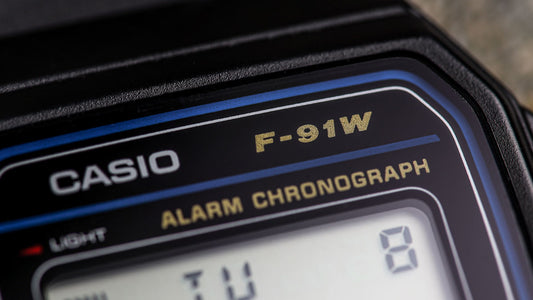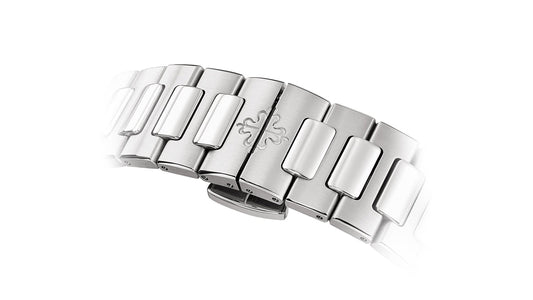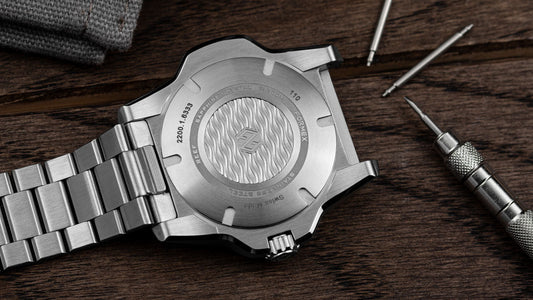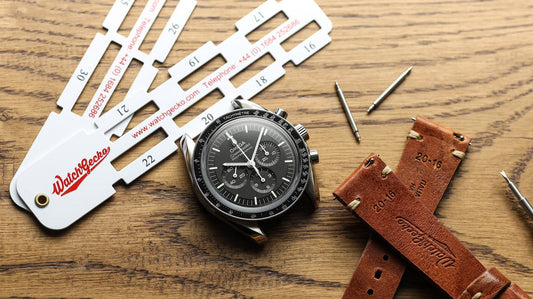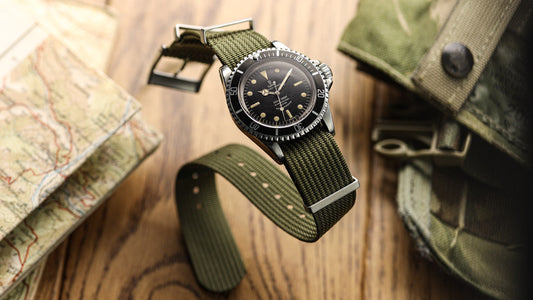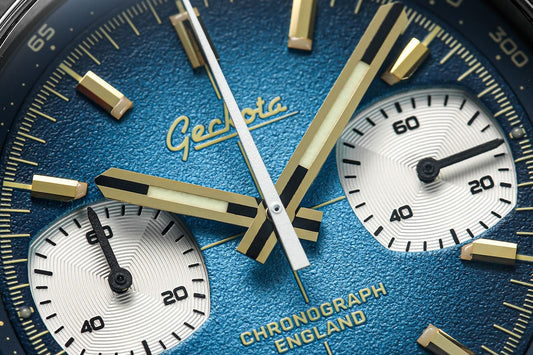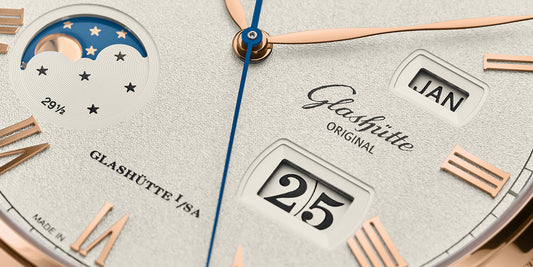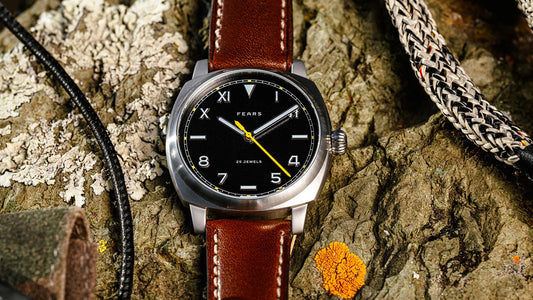A Mission Timer 15 years in the making...
I am very glad to be writing this. For the simple reason that this represents the culmination of a long process. A very long process. Plus, it means I am lucky enough to have been allowed to take a good look at the Precista PRS-56 prior to its release later this year.
The story begins back in 2007, a mere couple of months after I joined the TZ-UK forum (probably the UK's largest online watch community), when a member asked the site owner, Eddie Platts, to consider making a Mission Timer, because although he loved his Sinn EZM1, it's rising value represented too much risk for him to use as a daily beater. Eddie's response on the thread was an enigmatic "hmmmmmmmmmm". Not exactly resounding endorsement, but the seed had been sown.
A whole section of the TZ-UK forum is dedicated to the watches that Eddie produces, and he regularly shares his ideas for future models and reads suggestions from the membership. Eddie judges the response, and some concepts are pursued immediately, some are slower burners. Most ideas follow a relatively linear path from concept to reality, with the first renders tweaked but very similar to the final product. Others change significantly along the way, and a few projects wither completely and are abandoned.
The interaction has created some great ideas, but not every suggestion is a winner. For instance, Eddie recently shared the fact that although the forum regularly clamoured for acrylic crystal versions of his watches instead of sapphire, they sold disappointingly slowly. Thankfully, most of the development is positive, and Eddie continues to consult the membership, whilst still being very much his own decision-maker. There have been many times a hopeful suggestion has been met with a simple "No" from the boss.
I believe that this Mission Timer project holds the record, a full 15 years from concept to market.

The Precista PRS-56 collection - Image credit WatchGecko.
What Are Mission Timers?
A Mission Timer is a watch concept that Sinn evolved in the late 1990s, specifically in the EZM1, which I have previously reviewed here on WatchGecko. The concept is very simple. It needs to tell the time; it needs to measure elapsed time and it needs a bezel. And it must do all these things with utmost clarity, in every situation, so simplicity is key to the dial. Not to mention the case design must also consider hand combination, durability and water resistance.
Timefactors had previously made and sold a model called the PRS-17C, a quartz chronograph using the ETA 251.262. This movement displays elapsed seconds and minutes using central hands, like the Lemania 5100, but the 17C also used all the movement's sub-dials (3 of them - running seconds, chronograph hours and 1/10th of seconds) and date. The first Mission Timer concept was a simplified version of this watch, in the same case but with all the sub-dials removed and date retained. Some members even modified their own 17C watches to create Mission Timers exactly on these lines.
Hands On With The Watches
The watch has a very focused simplicity, leant by the Cockpit clock design housed in the Tonneau case. The top surface curves gently down to shrouded lugs, and a tapering chamfer runs along each side of the case top, with vertical sides. The running seconds provides "proof of life" in the movement, and no other sub-dials or date are present. The absence of running seconds is one of the most common complaints about the EZM1 design, and its presence at 12, clear but nestled under the resting chronograph hands, is a welcome addition that does not clutter the design. The case is also water resistant to 100m covering all but the deepest of wet eventualities.

The PRS-56 along with the Tutima Commando II Military Chronograph, Sinn EZM 1 and A-13A - Image credit WatchGecko.
At 40mm across, and 43.6mm from lug to lug, it is noticeably smaller than the Tutima. The bezel is 38mm across, and the crystal 30mm. It is 14.4mm thick, which is not surprising given the water resistance and the extended 4-hand stack beneath the crystal.
The 22mm lugs were a surprise (Tutimas have 20mm) but a good one. This means that if you use a strap, rather than the supplied bracelet, there is a significantly narrower shoulder at either end of the shrouded lugs. As a result, this looks much better on simple tapered straps than the Tutima could ever do. It's pictured here on a Cordura canvas strap, as well as an older generation of seatbelt Military Nylon.

The Precista PRS-56 on a ZULUDIVER Canvas strap pictured left - Image credit WatchGecko.
I was a little concerned at the lack of space behind the drilled lugs for thicker straps but can confirm that the relatively hefty seatbelt-style nylons do fit, at a pinch. If you are using a strap that thick, you will struggle to pull it through, so you will need to place the strap over the lug then push the spring bars into place. It has a reasonable heft, without being too heavy. I weighed it at 102g on a thick, single pass nylon, and 170g on its bracelet at full length.
The lume is another shock. The hands and indices are all lumed except the running seconds. On the black-insert bezel, all numerals and indices are also lumed. The X1 C3 lume is strong, bright and long-lasting. I have pictured it against what many consider the industry leader for lume, the Tudor Pelagos.

Lume shot of the Precista PRS-56 compared to the Tudor Pelagos - Image credit WatchGecko.
In all light conditions the white outline hands are very legible, and orange of the chronograph hands, although paler than some, offer a clear difference for easy reading of the elapsed time. The balance of the dial is a deep, matte black, providing strong contrast to the numerals, indices and hands. All the central hands bar the chronograph seconds have black central pinion, a nice detail.
The pushers, although the same shape as the Tutima, are not hinged in the same way and push into the case over their whole length. But given their chamfers all round, they fulfil the purpose of not catching on clothing or equipment very well. The signed crown screws down very positively, and the watch feels very planted on my 7 1/4 inch wrist. The bezel does not overhang the edge of case, but due to its depth at the edge, about 3mm, it's easy to grip and turns (uni-directionally) with a positive and loud set of 120 clicks for a full revolution.
The tonneau case shape blends into the tapering bracelet very nicely. The bracelet itself is long enough for the largest of wrists, with screwed links and 6 adjustment holes in the clasp, which itself has a pushbutton with a security fold over. Examining the DLC version of the bracelet very closely you find a couple of hidden corners where the coating has not fully penetrated, but none that are visible when wearing the watch. In general, the finely (almost satin) blasted finish of the bare steel, and under the DLC, is very even and crisp.
Unlike all my reviews to date, these 3 are loan watches, destined to be the ones photographed for the Timefactors website, and after that, for Eddie's own collection. As such I did not want to spend too much time swapping from strap to strap, with the inherent potential for case damage, even with drilled lugs to make it easier. This case design likes a nylon strap and suits a tapered strap too. I'm not sure many traditional leather straps suit it, but rubber definitely does. Round-topped padded straps echo the case shape and suit it well.

Wrist shot of the Precista PRS-56 DLC black - Image credit WatchGecko.
Final Thoughts
When I first saw the designs, I was immediately drawn to the DLC black version, for its evident tactical appearance, as well as the version with the black bezel insert. However, I have also grown to appreciate the brushed bezel insert too, as I feel that single detail elevates the whole watch above the evident “tool" qualifications that it possesses. It is the only version without lumed bezel numerals, so the functionality is reduced a little. On the other hand it has a little more flair than the others, especially as the insert brushing is very fine, almost polished.
I have an EZM1, so am relatively used to using a destro chronograph, with the start-stop pusher at 8 and the reset at 10. It's quite intuitive to use, as it uses the same thumb and forefinger press as the more traditional layout, the only difference being that the one that moves is the thumb, not the forefinger, when worn on the left wrist, and vice versa if it's on the right.
I also have an A-13A chronograph, which I use most weeks whilst coaching and refereeing rugby. The instantly readable nature of this chronograph movement makes it almost indispensable. However, I hope that next season I shall be timing the team with a PRS-56 instead.
In the meantime, my thanks go to Eddie for his faith in lending me these watches for review. I shall be near the front of the queue to get one of these later in the year.


